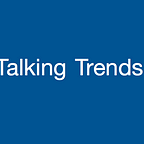Analyzing Multidimensional Situations — In conversation with Susan Leggett-Johnson
When light enters a prism, it splits into a rainbow of seven different colors. It is seven different aspects from the same single ray of light. Some can see the light as green, while others may see red or blue. The bottom line is, each person views it differently. The same concept holds true for most situations in life. Each situation consists of so many different aspects, and for one person to see all can be tough.
Most people view situations singularly — as being one-dimensional and having only one solution. However, reality is multidimensional — there are so many ways to view one situation — each one on a different wavelength. Lucky are those who are able to use different lenses to analyze a singular situation.
We are in conversation with Susan Leggett-Johnson — a transformational and leadership coach, internal medicine physician, and diversity, inclusion, and belonging implementor. Susan has held/holds other roles as well — an operational and executive leader, a CHRO, board director, and coach. In short, Susan views situations through many lenses — and she is sharing how.
You’re a physician, with experience as an operational and executive leader, a CHRO, board director, and coach — that gives you a broad perspective on multiple issues at hand. How do you apply that unique perspective while working toward your next goal?
There was a point when I thought that technical skills and knowing how to do the job at hand were enough. Over time, having held multiple roles across disciplines and opportunities to grow my leadership skills, I realized, as most leaders do, that is just the tip of the iceberg. You don’t have to be perfect at a job or have all the answers. Perfection should not be your goal. Staying curious, asking the right questions, and building a solid team of talented people is extremely important. You learn from your failures, support team members’ failures, and work to build trusting relationships. Your values, perspective, leadership management skills, ability to communicate and collaborate effectively, and so on, are far more crucial than just the technical skills themselves. All my roles, as mentioned earlier, have shaped my perspectives and tailored my thought process to be broad, inclusive, and empathetic.
“Aside from my professional background, my experiences as an African-American woman comes into play as well. There were times when I felt threatened or under attack because of my gender, race, or both. I felt triggered by events that came across as disrespectful, dismissive, unfair, or when faced with unrealistic demands. Over time, I learned to avoid having my amygdala hijacked by my survival brain reactions through practicing micro-resilence techniques. Managing my internal alarm, in turn, allowed me the opportunity to address the perceived conflict more appropriately, often, but not always, resulting in teachable moments for all involved parties and building a more trusting relationship.
“As a physician and coach, I learned the value of listening and asking powerful questions to uncover what was not being considered, shared, or said. As the Associate Medical Director for Human Resources (aka CHRO), I understood the importance of assessing and strengthening leadership skills. However, through my work in the DEI space, I truly began to understand that building a diverse team was not the same as building an inclusive team, and you needed to do both.
Thanks for sharing, Susan.
